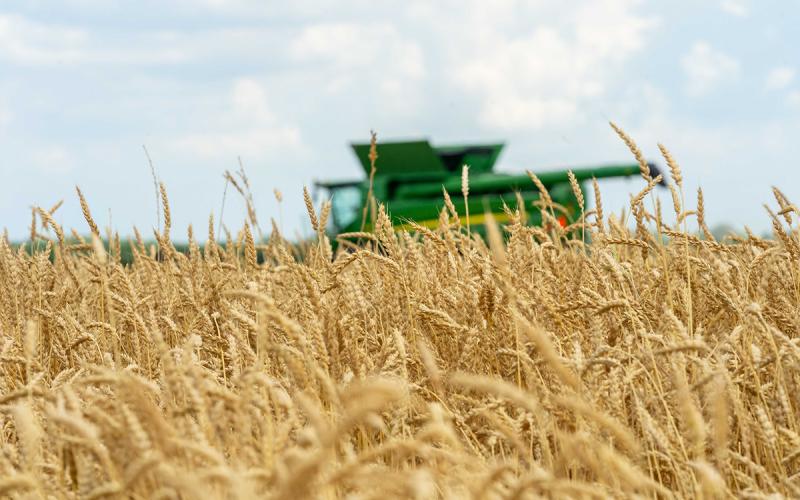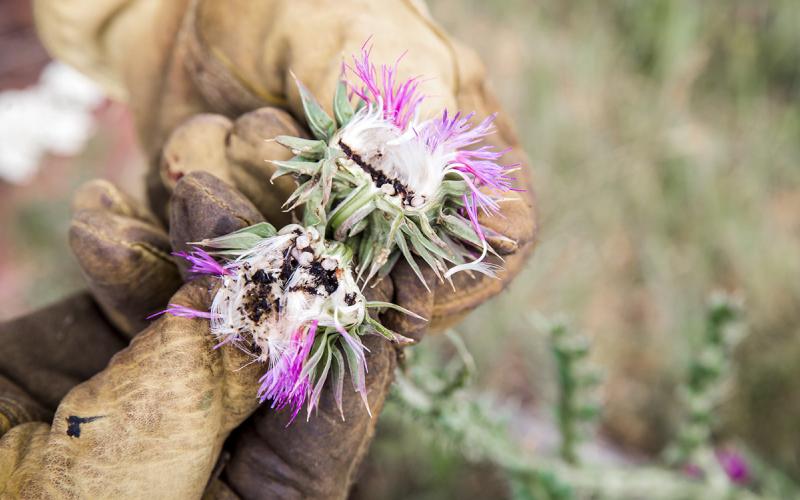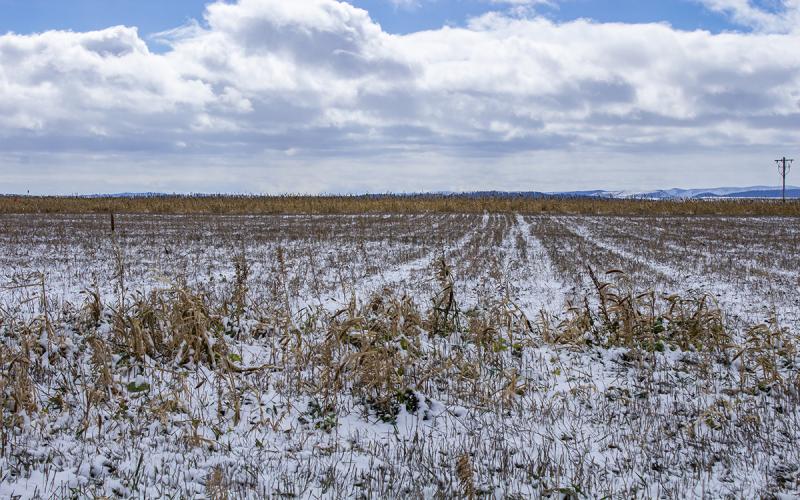
Written collaboratively by Eric Jones, Graig Reicks, Philip Rozeboom, Jill Alms, and David Vos.
Most of the winter wheat has been harvested in South Dakota and spring wheat harvest is underway. While the growing season is over for the wheat, post-harvest weed management is important to minimize the amount of weeds that are present in the spring. Weeds may continue to grow or emerge after the wheat harvest. These weeds will likely produce seeds that will have to be managed in future growing seasons. Shortly after wheat harvest, most of the weeds will be summer annuals. However, some winter annual and perennial weeds may also be present. The summer and winter annual weeds can be sprayed with an herbicide any time after harvest but aim to treat weeds 2 to 4” in height.
Perennial weeds, such as Canada thistle, should be treated later in the season. The herbicides should be applied to these weeds after a light frost. A light frost coincides with shorter day lengths when perennial plants begin to transport assimilates and nutrients down to the roots/rhizomes to survive the winter months. An herbicide application in the fall can be more effective by killing the underground plant material since the herbicide will translocate with the nutrients. If a hard frost occurs before the application, wait 24 to 48 hours to determine if the plant vegetation will die. If leaves become necrotic (exhibiting brown, dead lesions) and wilted foliage, then do not spray, as the herbicide will not be absorbed or translocate throughout the plant. If the leaves remain green, proceed to spray, as long as conditions remain approximately 50 degrees during the daytime for several days.
Fall is another time where a residual herbicide (often referred to as preemergence herbicide) application will likely be beneficial. Residual herbicides require precipitation (generally 0.5 to 1 inches) to move the herbicide into the soil layer where the weed seedlings are germinating. The precipitation event should occur within 3 days of application, or the weed seedlings can emerge through the herbicide layer to survive as many residual herbicides do not kill emerged plants. Therefore, in drier areas, residual herbicides can be applied in the fall to take advantage of snow melt and a longer period to receive the 0.5 to 1 inches of activating precipitation. A fall-applied residual herbicide can help manage early emerging weeds that may be too wet to spray in spring from snowmelt. Most herbicide labels require the application to be made in October but not to frozen soil. The timing of crop harvest and weather conditions can make a timely application difficult. If there is a particular field that has weed issues, try to make the herbicide application there a priority.
Regardless of the herbicide application timing, select herbicides based on the weed species present. Utilizing two unique herbicides in each application usually results in more effective management and reduces selection pressure on resistant weeds. Before selecting herbicides to apply, consult the respective labels and latest South Dakota Pest Management Guides for a complete list of herbicides and usage.


